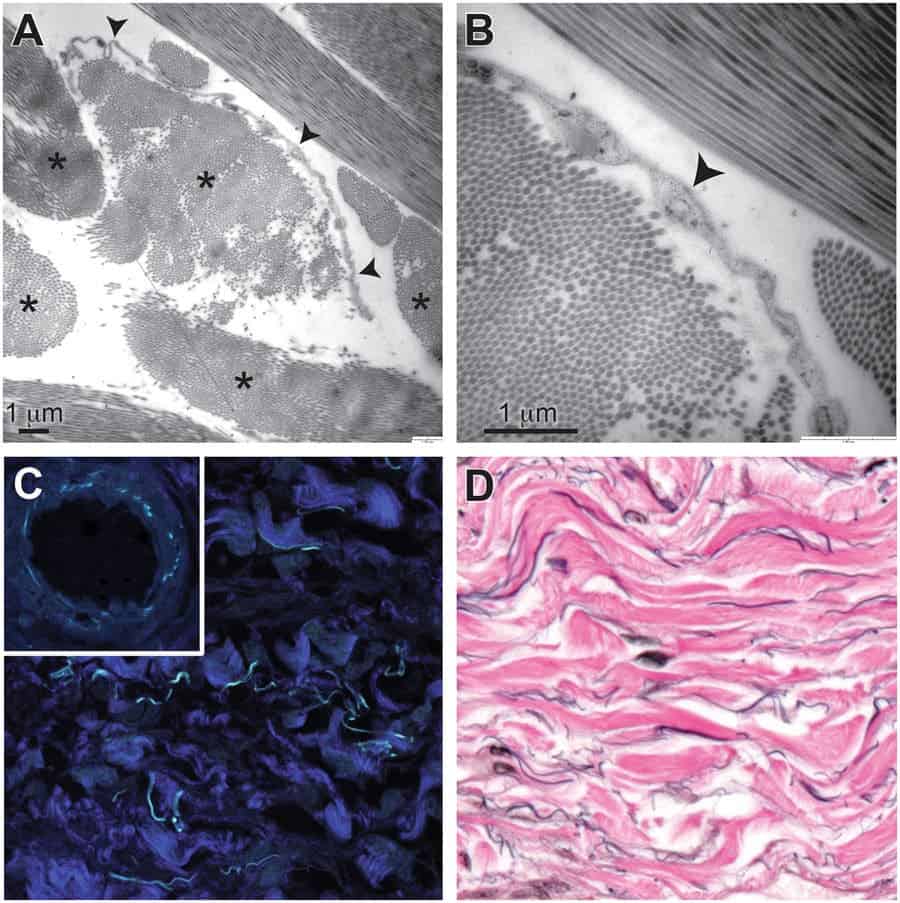Doctors have identified a previously unknown feature of human anatomy with many implications for the functions of most organs and tissues, and for the mechanisms of most major diseases.

A new paper published on March 27th in Scientific Reports, shows that layers of the body long thought to be dense, connective tissues — below the skin’s surface, lining the digestive tract, lungs, and urinary systems, and surrounding arteries, veins, and the fascia between muscles — are instead interconnected, fluid-filled spaces.
Scientists named this layer the interstitium — a network of strong (collagen) and flexible (elastin) connective tissue fibers filled with fluids, that acts like a shock absorber to keep tissues from rupturing while organs, muscles, and vessels constantly pump and squeeze throughout the day.
This fluid layer that surrounds most organs may explain why cancer spreads so easily. Scientists think this fluid is the source of lymph, the highway of the immune system.
In addition, cells that reside in the interstitium and collagen bundles they line, change with age and may contribute to the wrinkling of skin, the stiffening of limbs, and the progression of fibrotic, sclerotic and inflammatory diseases.
Scientists have long known that more than half the fluid in the body resides within cells, and about a seventh inside the heart, blood vessels, lymph nodes, and lymph vessels. The remaining fluid is “interstitial,” and the current paper is the first to define the interstitium as an organ in its own right and, the authors write, one of the largest of the body, the authors write.
A team of pathologists from NYU School of Medicine thinks that no one saw these spaces before because of the medical field’s dependence on the examination of fixed tissue on microscope slides. Doctors examine the tissue after treating it with chemicals, slicing it thinly, and dyeing it in various colorations. The “fixing” process allows doctors to observe vivid details of cells and structures but drains away all fluid. The team found that the removal of fluid as slides are made makes the connective protein meshwork surrounding once fluid-filled compartments to collapse and appear denser.
“This fixation artifact of collapse has made a fluid-filled tissue type throughout the body appear solid in biopsy slides for decades, and our results correct for this to expand the anatomy of most tissues,” says co-senior author Neil Theise, MD, professor in the Department of Pathology at NYU Langone Health. “This finding has potential to drive dramatic advances in medicine, including the possibility that the direct sampling of interstitial fluid may become a powerful diagnostic tool.”
Researchers discovered the interstitium by using a novel medical technology — Probe-based confocal laser endomicroscopy. This new technology combines the benefits of endoscopy with the ones of lasers. The laser lights up the tissues, sensors analyze the reflected fluorescent patterns, offering a microscopic real-time view of the living tissues.
When probing a patient’s bile duct for cancer spread, endoscopists and study co-authors Dr. David Carr-Locke and Dr. Petros Benias observed something peculiar — a series of interconnected spaces in the submucosa level that was never described in the medical literature.
Baffled by their findings, they asked Dr. Neil Theise, professor in the Department of Pathology at NYU Langone Health and co-author of the paper for help in resolving the mystery. When Theise made biopsy slides out of the same tissue, the reticular pattern found by endomicroscopy vanished. The pathology team would later discover that the spaces seen in biopsy slides, traditionally dismissed as tears in the tissue, were instead the remnants of collapsed, previously fluid-filled, compartments.
Researchers collected tissues samples of bile ducts from 12 cancer patients during surgery. Before the pancreas and the bile duct were removed, patients underwent confocal microscopy for live tissue imaging. After recognizing this new space in images of bile ducts, the team was able to quickly spot it throughout the body.
Theise believes that the protein bundles seen in the space are likely to generate electrical current as they bend with the movements of organs and muscles, and may play a role in techniques like acupuncture.
Another scientist involved in the study was first author Rebecca Wells of the Perelman School of Medicine at the University of Pennsylvania, who determined that the skeleton in the newfound structure was comprised of collagen and elastin bundles.
Was this helpful?



